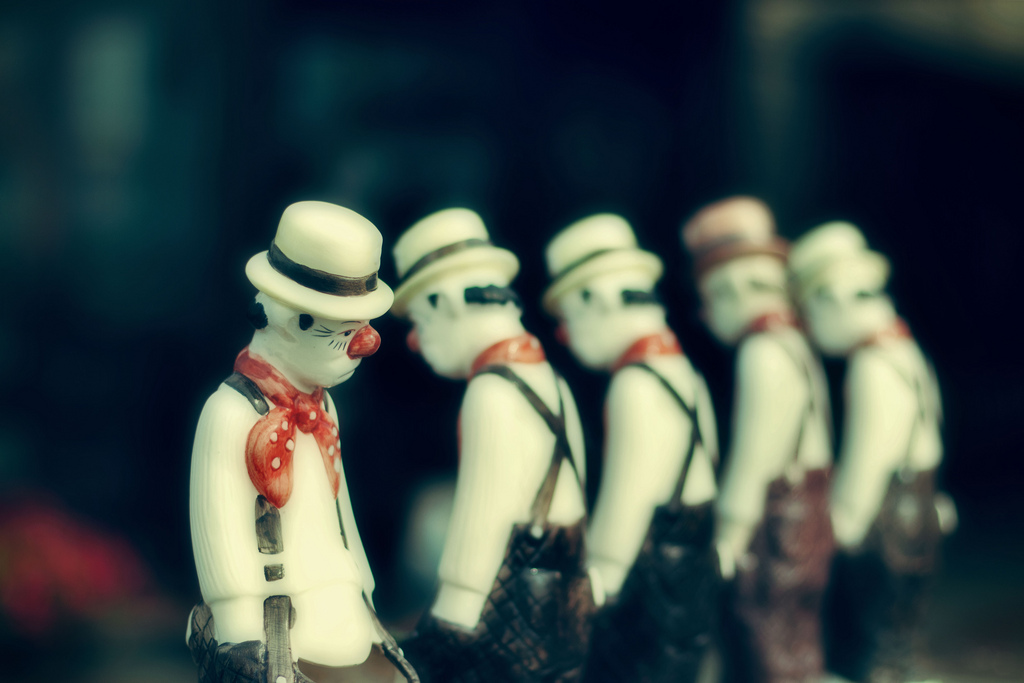Clown (n): someone who performs in a circus, who wears funny clothes and makeup, and who tries to make people laugh.
According to Meriam Webster’s Dictionary, clowns are harmless bozos that exist primarily for entertainment. However, the history of clowns and rise of creepy clown sightings in 2016 would say otherwise.
The concept of clowns dates back as far as ancient Egypt, where pygmy clowns would make the pharaohs laugh. Clowns also existed in ancient imperial China and acted as political satirists to criticize the Emperor’s ideas, in the Hopi Native American tribes as humorous additions to serious dance rituals and in the Medieval Times as court jesters.
Despite these old depictions of clowns, the “modern day” clown persona that we know of spawns from Joseph Grimaldi, a humorous stage performer.
By night, Grimaldi lived his life as a clown, but by day, he lived a sad existence. His wife died during childbirth, his eldest son died from alcoholism, and his father was abusive. His tagline, “I am Grim All Day, but I make you laugh at night,” came to represent the stereotypical lifestyle of clowns everywhere.
Many believe that the only reason people choose to dress up and perform as clowns is for their own personal benefit, like Grimaldi did to escape from his dark reality.
Serial killer John Wayne Gacy is another example of this notion.
Gacy, also known as the Killer Clown, sexually assaulted and murdered at least 33 teenage boys and young men between 1972 and 1978. One of his favorite hobbies was, of course, performing at children’s birthday parties and at charitable events as “Pogo the Clown,” a persona he created himself.
Although Gacy’s fascination with the world of clowns did not spawn from his desire to murder, he once remarked to two surveillance detectives, “You know…clowns can get away with murder.”
Coulrophobia, or the fear of clowns, is not irrational. Throughout history, we have been given several reasons to fear clowns.
In an Italian opera from 1892 cleverly entitled Pagliacci, which literally translates to ‘clown,’ a woman is murdered by her husband, a performing clown who smears her blood onto his face in the fashion of the all-to-familiar big, red clown smile.
When the art of clowning was brought to America, it spread quickly. The shows grew bigger and bigger, and clowns were forced to occupy more space, be funnier. Their movements and jokes became maniacal and more obvious, and these grand gestures do not always sit well with people.
Clowns such as Emmett Kelly, the infamous “hobo” clown, Clarabell the Clown, and Bozo the Clown solidified the entertainment purpose of the art, and suddenly, clowns were everywhere.
They even invaded McDonalds, which adopted Ronald McDonald the clown as their mascot.
The exaggerated movements, overdrawn face paint, and poor jokes had always unsettled people, but Hollywood truly solidified coulrophobia.
In the movie Poltergeist, a little boy’s clown doll comes to life and drags him under his bed.
Stephen King’s novel It came out shortly after, which was followed by a television adaptation featuring Tim Curry as Pennywise, a clown who preys on children.
Other iconic clown movies include Killer Klowns from Space, Clownhouse, Carnival of Souls, and Amusement, all featuring evil clowns with a taste for blood.
Characters like Jigsaw from the Saw movie franchise and The Joker from Batman continued to give clowns a bad reputation.
Despite big circuses such as Ringling Bros., Barnum and Bailey or Cirque du Soleil, the negative images that Hollywood has given clowns continues to frighten children and adults everywhere.
With the upcoming release of the new adaptation of Stephen King’s It movie, it is hard to say if this view of clowns will ever change.
One thing is for sure, though: coulrophobia will not fade as a fear in children and adults anytime soon.

